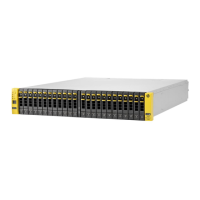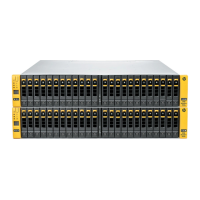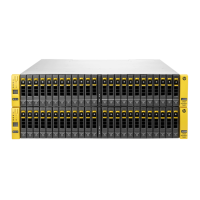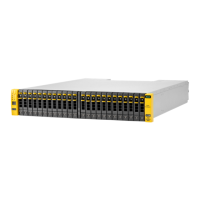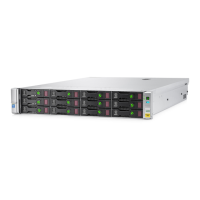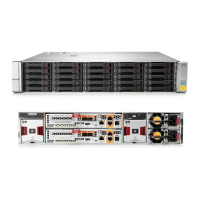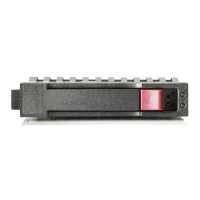If the performance of one or more physical disks degrades, the throughput of the LDs is reduced
and the entire system performance may decline. There are two general reasons why a physical
disk may have degraded performance:
• The physical disk has reached its maximum throughput due to an unbalanced load. A disk in
this state typically has unusually high average service times when compared to other disks.
• The physical disk is a bad disk. A bad disk typically has unusually high maximum service
times when compared to other disks.
The tunepd command allows you to:
• Perform physical disk performance tuning on an entire system or on a specified subset of disks.
• Set performance thresholds for physical disk tuning.
• Identify and relocate under-performing chunklets.
In the following example, physical disks with average service times exceeding 50 milliseconds are
identified and their chunklets are automatically relocated to rebalance the load on the physical
disks.
To tune physical disks, issue the tunepd -vvlayout -chstat -movech auto avgsvct
50 command, where:
• <vvlayout> specifies that the layout of the virtual volume is displayed.
• <chstat> specifies that chunklet statistics are displayed.
• <movech> specifies that if any disks with unbalanced loads are detected, the chunklets are
moved from those disks for load balancing
• <auto> specifies that the system automatically chooses source and destination chunklets.
• <avgsvct> specifies the average service time threshold in milliseconds.
For more information about viewing system performance statistics, see “Viewing Statistics and
Histograms” (page 121). For more information about how the system manages space usage, see
the HP 3PAR StoreServ Storage Concepts Guide.
NOTE: Running the tunepd command does not eliminate the need to run the tunesys command.
The tunesys command performs space based balancing. The tunepd command performs service
time and I/O based balancing.
Compacting Logical Disks
Reclaim unused LD space with the compactcpg command. When multiple identical virtual volumes
are created as a result of a single volume creation operation, the underlying LDs that support those
volumes are shared by the volume group. If several of the members of that volume group are later
deleted, the underlying LDs may become less efficient in the usage of space. One or more LDs
shared by the volume group may have only a small portion of their regions mapped to existing
virtual volumes. However, their unused regions are not available to the system for use in creating
new LDs. Compacting the LD regions mapped to these volumes may recover and free LD space.
For more information about how the system manages space usage, see the HP 3PAR StoreServ
Storage Concepts Guide.
You can compact LDs for a group of volumes that share LDs with the compactld command.
Existing regions on the fragmented LDs are migrated to new, fully use LDs and the older ones are
deleted so that unused space can be returned to the system’s free chunklet pool.
To reclaim unused LD space from the group of virtual volumes, issue thecompactld <LD_name>
or compactld -pat <pattern> command, where:
• <LD_name> is the name of the LD you wish to compact.
• <pattern> displays all LDs that match the pattern.
178 Performance Tuning

